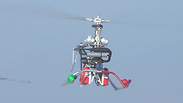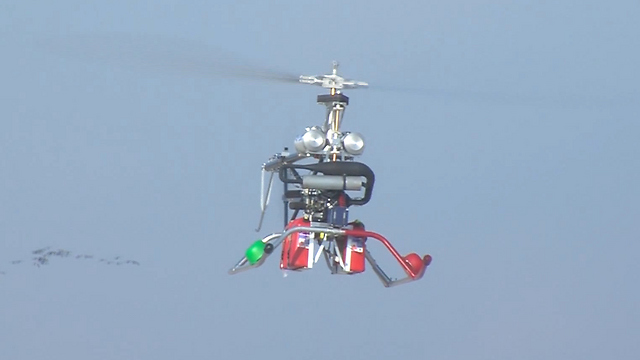
Two large drones manufactured by Aeronautics Defense Systems (ADS) were unveiled Wednesday, said to be capable of carrying logistical and supply payloads in ground maneuvers over enemy territory.
The latest unveiling of the state-of-the-art drones ties into the Ministry of Defense's Tuesday announcement regarding soon-to-become operational new devices for the IDF, which shone only a partial light on the world of drones currently picking up steam all over the world—especially due to its military applications.
Drones are now far removed from the models the IDF has already been using for near-range observation missions. They are now part of a wave which may soon equal the activities and contribution made by the unmanned aerial vehicle (UAV) squadrons.
One of the drones unveiled Wednesday is considered a breakthrough in the field of UAVs—thought to still be in its infancy. An Aeronautics subsidiary, working in Be'er Sheva with Ben Gurion University, is completing development on what appears to be an unmanned mini-copter.
This drone has a diameter of two meters and weighs 120 kilos when fully loaded—75-90 kilo of which may be the cargo attached to it. "We'll want to reach weights of 200 and 300 kilos in the future," said a source in the company, which specializes in manufacturing UAVs and observation balloons for the IDF and other security apparatuses in the world. "The drone we developed can fly at exceedingly low altitudes in a manner that both masks it to the naked eye and is energy efficient."
This innovative drone can carry a variety of cargo for special forces, such as a team of soldiers carrying out a covert observation while lying in ambush. The cargo may include observation devices, batteries, weapons, ammunition or food and water, nullifying the need for an APC or other vehicle on the ground, which run the risk of hitting explosives, or for a manned plane to drop them.
One of the aerial vehicle's most distinguishing features is its hybrid engine integrating electric propulsion from batteries with using petrol. This enables the drone to reach distances beyond 8 kilometers. It may also be inputted with coordinates and then controlled from afar.
One of the drone's drawbacks, however, compared to a garden variety UAV, is its short air time capabilities along with the noise it produces, which may expose it to the enemy. "It's for this reason we're working on propellers made of special materials producing less noise," and ADS spokesman explained.
"We'll also be able to fasten each of these logistical drones with a unique cargo for photography and intelligence gathering missions, making it much more versatile," the spokesman continued. "This heavy drone does, in fact, possess elements from the world of UAVs such as avionics, flight control, unique payloads and communication devices. The drone has already participated in drills proving its capabilities."
It's doubtful whether these drones will phase out UAVs completely, but the security establishment is ecstatic with the fact the drone may lift off the ground from any point on the terrain vertically—similar to a helicopter—without requiring runways.

















